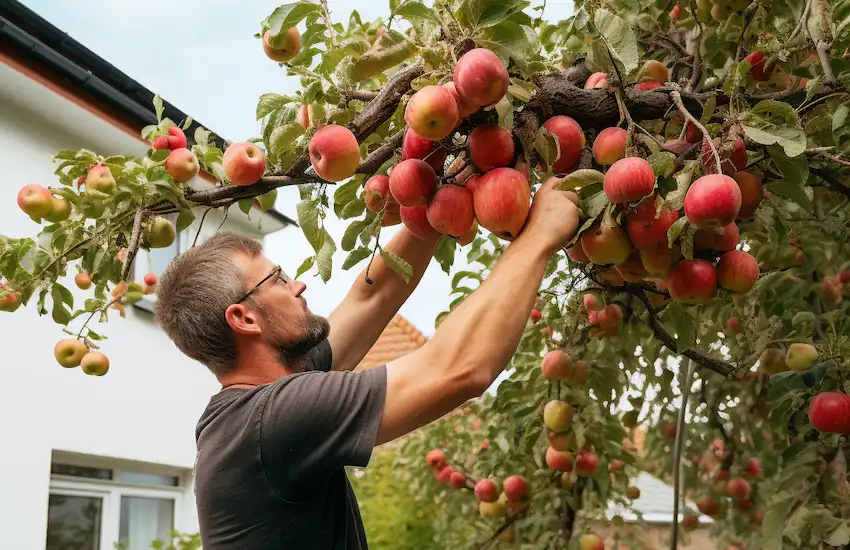
Restoring neglected fruit trees can be a rewarding but challenging process. Here is a comprehensive guide to pruning and restoring health and productivity to old fruit trees:
Assessing the health of the tree
Before pruning, assess the general health and structure of the tree. Consider whether the tree is worth saving, taking into account factors such as the uniqueness and quality of the fruit, structural integrity and location. Inspect the trunk and main branches for signs of decay or damage. If the tree is structurally unstable, severely diseased or in a poor location, it may be more practical to plant a new tree or propagate the old one vegetatively.
Circumcision steps
- Remove dead and diseased branches : The first step is to remove all dead, diseased and broken branches. This cleaning process is vital to the health of the tree and sets the stage for further pruning.
- Reduce tree height gradually : If the tree is too tall, reduce its height over a 2-3 year period, removing no more than one-third of the tree’s total height in a single year to avoid shock. This will help control the size of the tree and encourage new growth lower down.
- Thin branches : Remove unwanted interior branches, especially those that cross or grow too closely parallel. Thinning improves light transmission and air circulation in the canopy, which is critical for fruit quality and disease control.
- Heading and thinning cuts : Use heading cuts to shorten and stiffen branches, encouraging branching further down. Thinning cuts remove entire shoots back to their point of origin, opening up the canopy without causing excessive regrowth.
- Annual progress : Continue shaping the tree in subsequent years, reducing the height as needed, always aiming to improve the light and air penetration of all branches. This gradual process allows the tree to adapt without putting too much stress on it.
Further considerations
- When to prune : Perform a thorough pruning in late winter or early spring during the dormant period to encourage healthy new growth in the spring.
- Pruning Systems : The pruning system used depends on the type of fruit tree. For example, semi-dwarf apple and pear trees often use a central guide system, while peach and nectarine trees typically use an open center system.
- Disinfection and tools : Make sure your pruning tools are sharp and disinfected to prevent the spread of disease. Clean and dispose of cut wood properly after pruning, especially if it is diseased.

Aftercare and maintenance
- Soil health : Promote tree recovery by removing tall grass or brush around the trunk and checking soil pH. Mulch under the tree with compost or aged manure to improve soil health and vitality.
- Regular care : Start a regular spraying program with dormant oils and fungicides during each dormant period to keep the tree healthy.
Restoring a neglected fruit tree is a multi-year process that requires patience, careful assessment, and a thoughtful approach to pruning and aftercare. By following these steps and providing regular maintenance, you can rejuvenate old fruit trees, improving their health and fruit production. Remember, the goal is to create a tree with a balanced structure, an open canopy, and good fruit-bearing capacity.